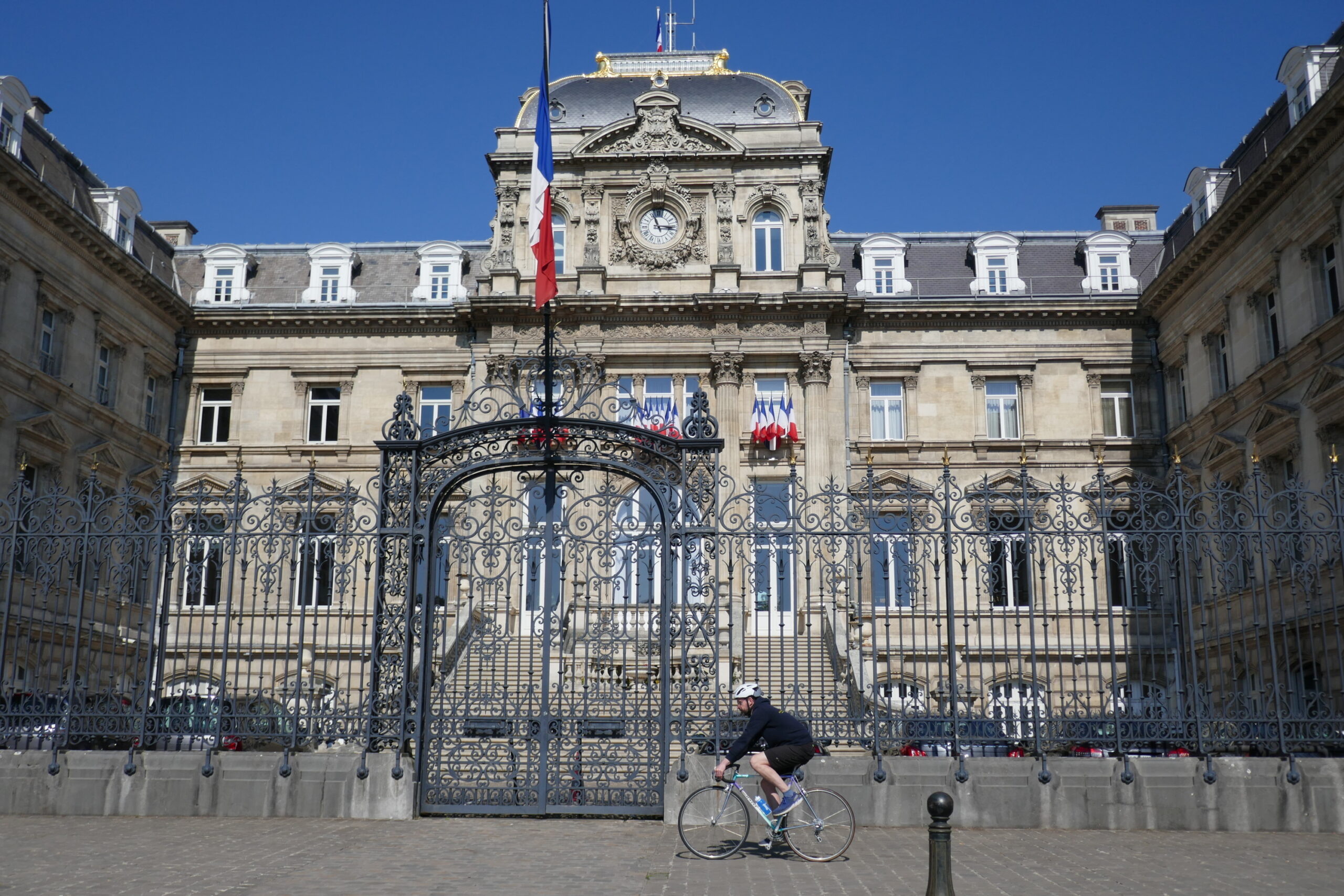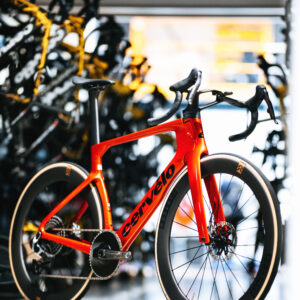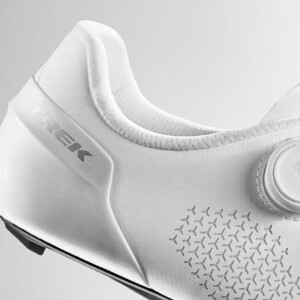The 2025 Tour de France started in Lille and spent most of the first few stages in northern France. Amy McPherson tours the area to see what it offers riders.
Lille, the Grand Depart
My trip covers a big loop, roughly following the first stages of this year’s Tour de France, and it made sense to begin from Lille, where I relish the Grand Depart countdown. Lille is close to the border with Belgium and is only an hour by fast train from Paris; it combines French charm with Flemish flair.
I hired a bike from a local man Fabien, who is a keen cyclist. We rolled out from the Grand Place, where the team presentation will open the festivities of the Tour de France. Lille didn’t need to wait for the party, for the city is also hosting its regular arts and cultural festival – Fiesta – this year. Splashed around the elegant Flemish facades of the houses are bright and quirky artworks and posters advertising events and exhibitions.
We journey along the network of cycle ways, which northern France is famous for. Cycling is a delight here. The locals seem to have learnt from their cycling-loving Belgian neighbours – the infrastructure and the respect everyone has for others is top class.
“Even the French from elsewhere come to the north and say we are super friendly,” said Fabien, when I mentioned how considerate and respectful all the road users have been towards cyclists. “It really is a nice place to bike.”
We photographed some of Lille’s major sights, from Porte de Paris and the nearby Beffroi de Lille, then popping to Gare Saint Sauveur to check out the free exhibition that is part of the Fiesta festival, before getting back into the old city to browse the markets. Of course, we made a stop at the Tour de France countdown, just because!
It’s not my first time here, and as far as cities go, I prefer Lille to Paris. The Flemish heritage heavily influences its architecture and cuisine, including beer making. This is where you’ll find France’s best beers, guaranteed.
Sightseeing aside, Lille is a fantastic base for a couple of exciting day rides out of the city. Take the cobbles of Paris-Roubaix for example, which starts in Lille and winds its way through surrounding villages chasing cobbles until looping back to Roubaix, north of Lille. More cobbles await across the border in Belgium. There’s the Eddy Merckx Route to tackle too.
But I am not here to race on champion roads. I wanted to appreciate northern France on two wheels, take my time to smell the roses if you will, so at the end of my tour, Fabien entrusted me with his bike and waved me off to check out some great cycle touring routes in these parts.
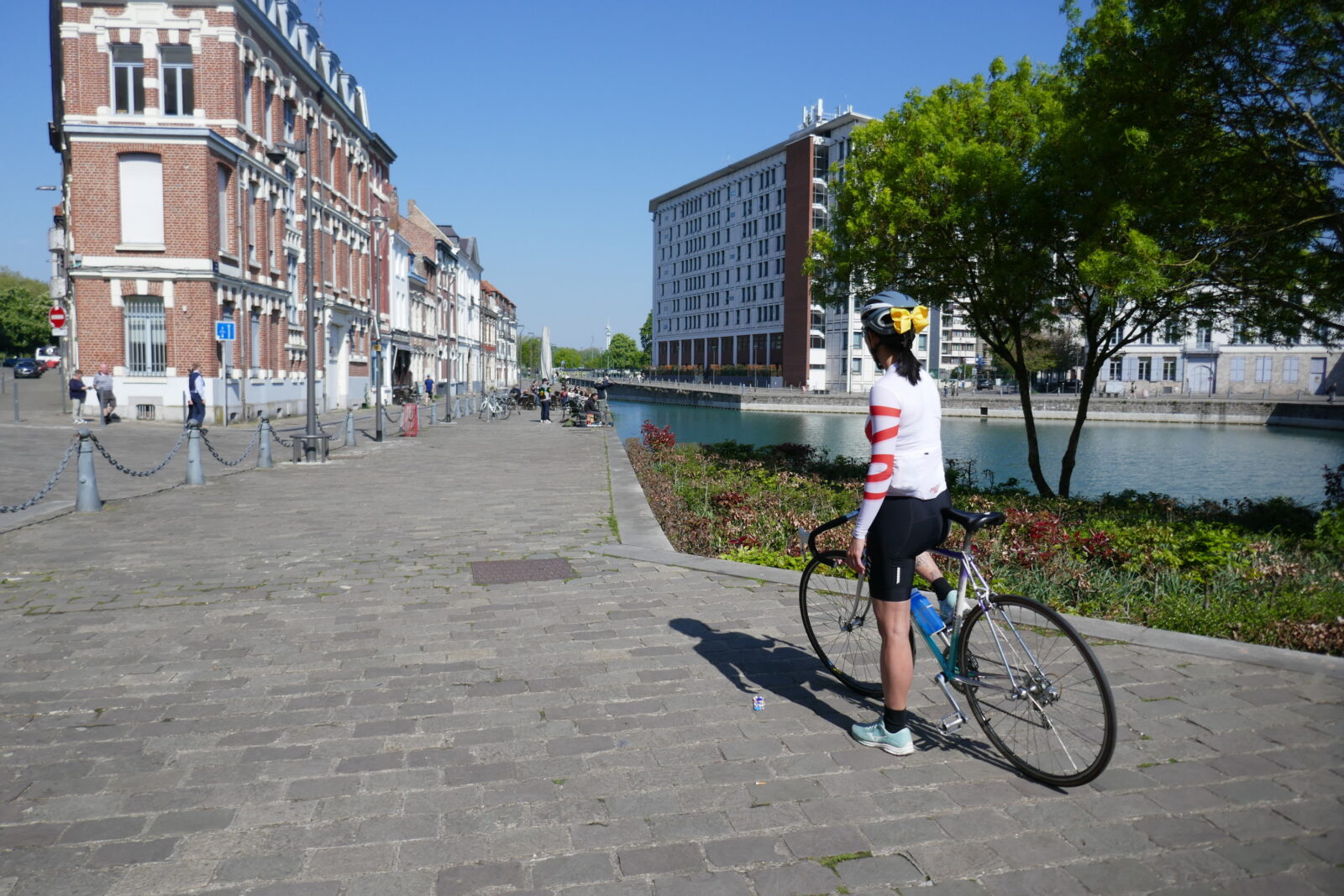

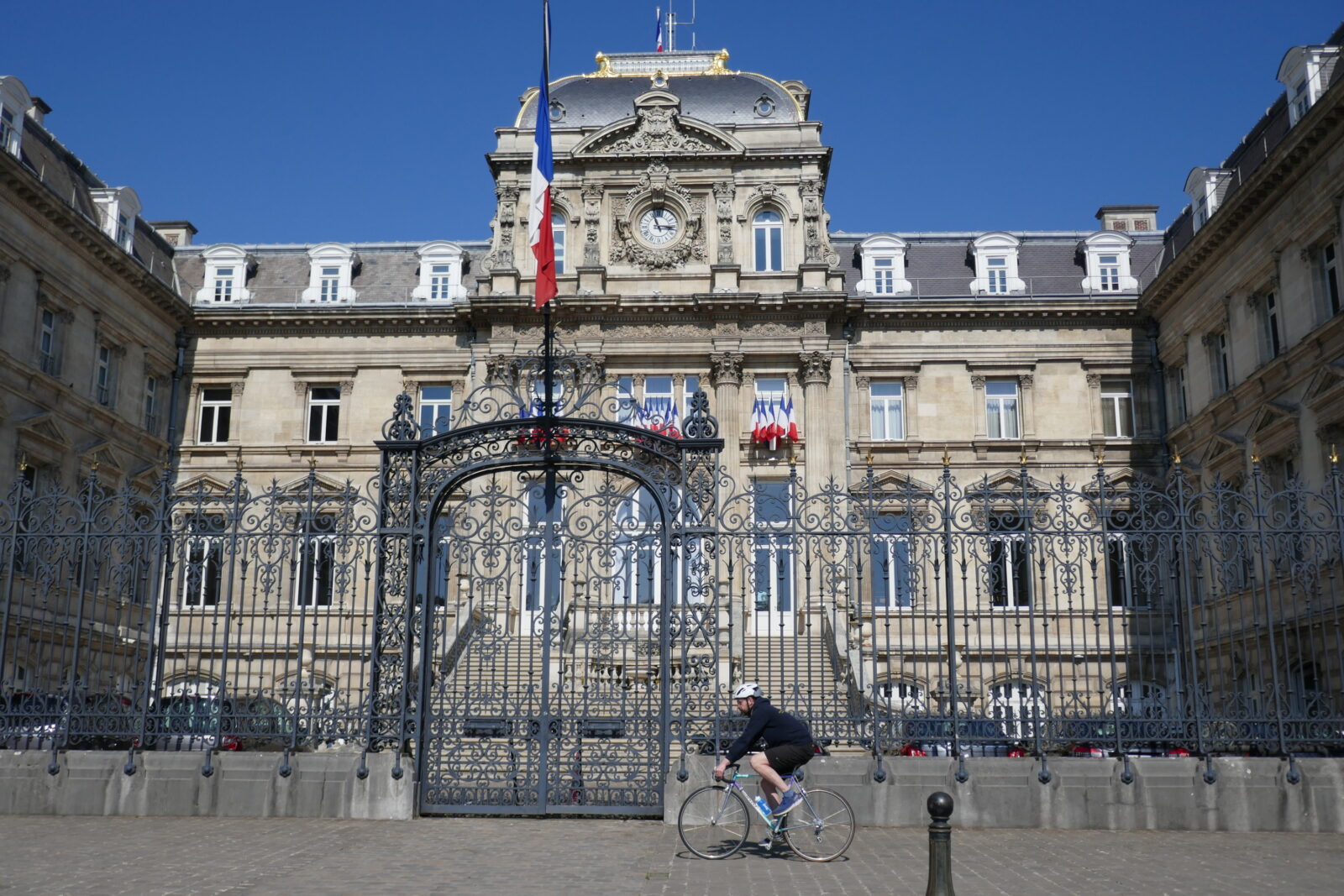

A Grande Boucle through the Flemish north
From Lille to Dunkirk, you can either cross the border and go through Belgium or stay on the French side and visit some of the lesser-visited parts of this country.
A very popular cycling route called ‘Véloroute des Flandres’ joins Armentières, a town on the outskirts of Lille, to the coastal city of Dunkirk. Following mostly quiet roads through some border towns with distinct Flemish names like Godewaersvelde and Wormhout. You’d think you’d crossed the border to a different country!
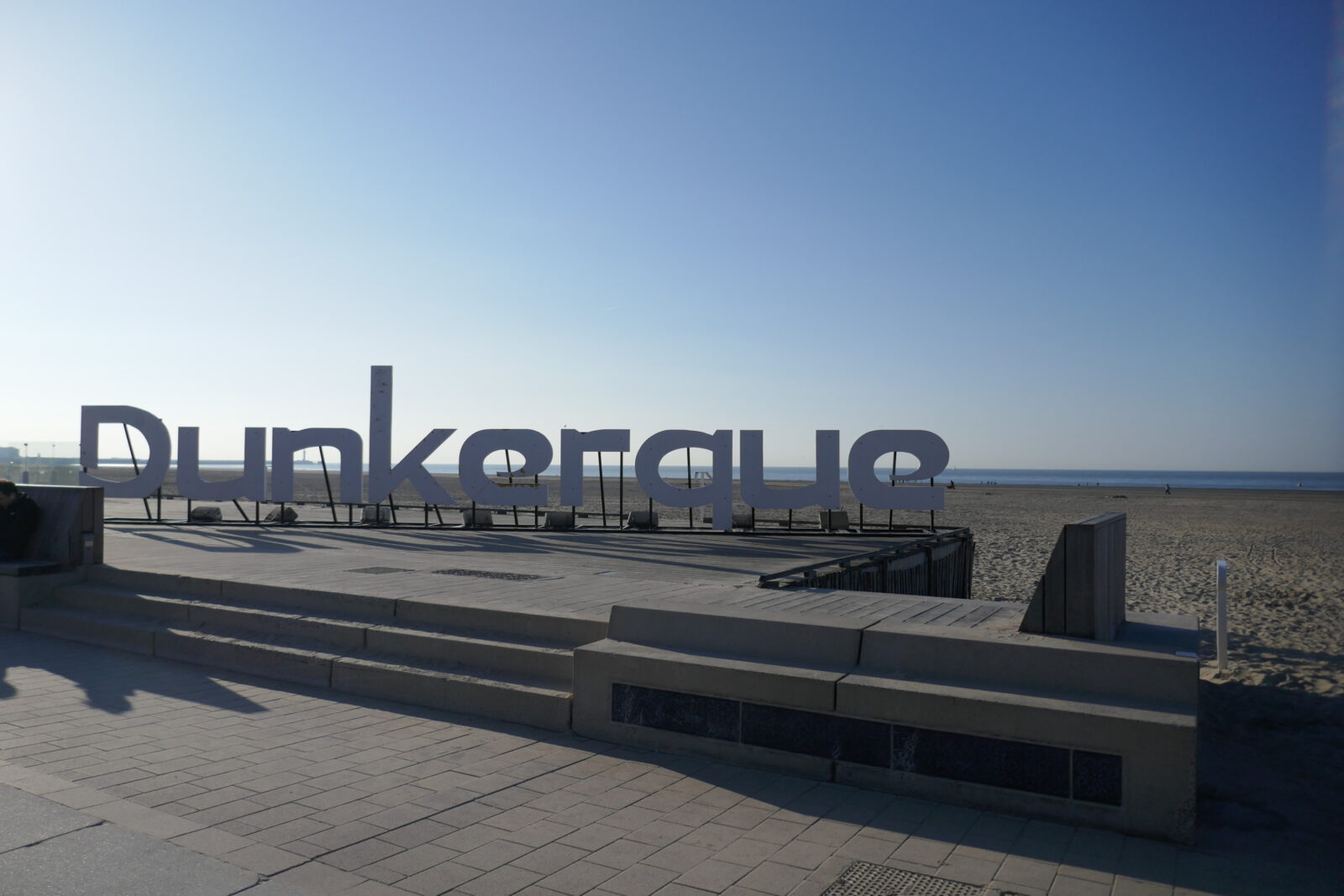
Spring was in the air, and the route took me through farmland flanked by bright yellow fields of canola flowers and green sprouts of wheat. Although narrow, the road is empty except for a few cars and an occasional tractor.
Although northern France doesn’t have the epic climbs, there is pleasure in cycling through a serene landscape, with buzzards and peregrine falcons circling overhead, and occasional ground-dwelling pheasants dashing in and out of the surrounding bushes.
And then, just as my mind began to tune into a steady spin pattern, I heard drumming. It was coming from the local church spire, and I found myself in the middle of giants. The giants of northern France are legendary among its cultural folklore and I’ve been wanting to see them paraded for a long time. I stayed for a while admiring these giant puppets and the dedication and efforts of the local people toward them each year.
The roads became busier as I approached Dunkirk, and flags began to pave my way into the city itself. We all know Dunkirk as an important episode in World War II, but what we learned at school in Australia was a small portion of the operation that happened here. As I rode onto the seafront promenade, I was lured to the side of the bridge where I heard a lone, solemn tune played on bagpipes before a moules frites (mussels and fries, specialty of these parts) dinner with a beach sunset.
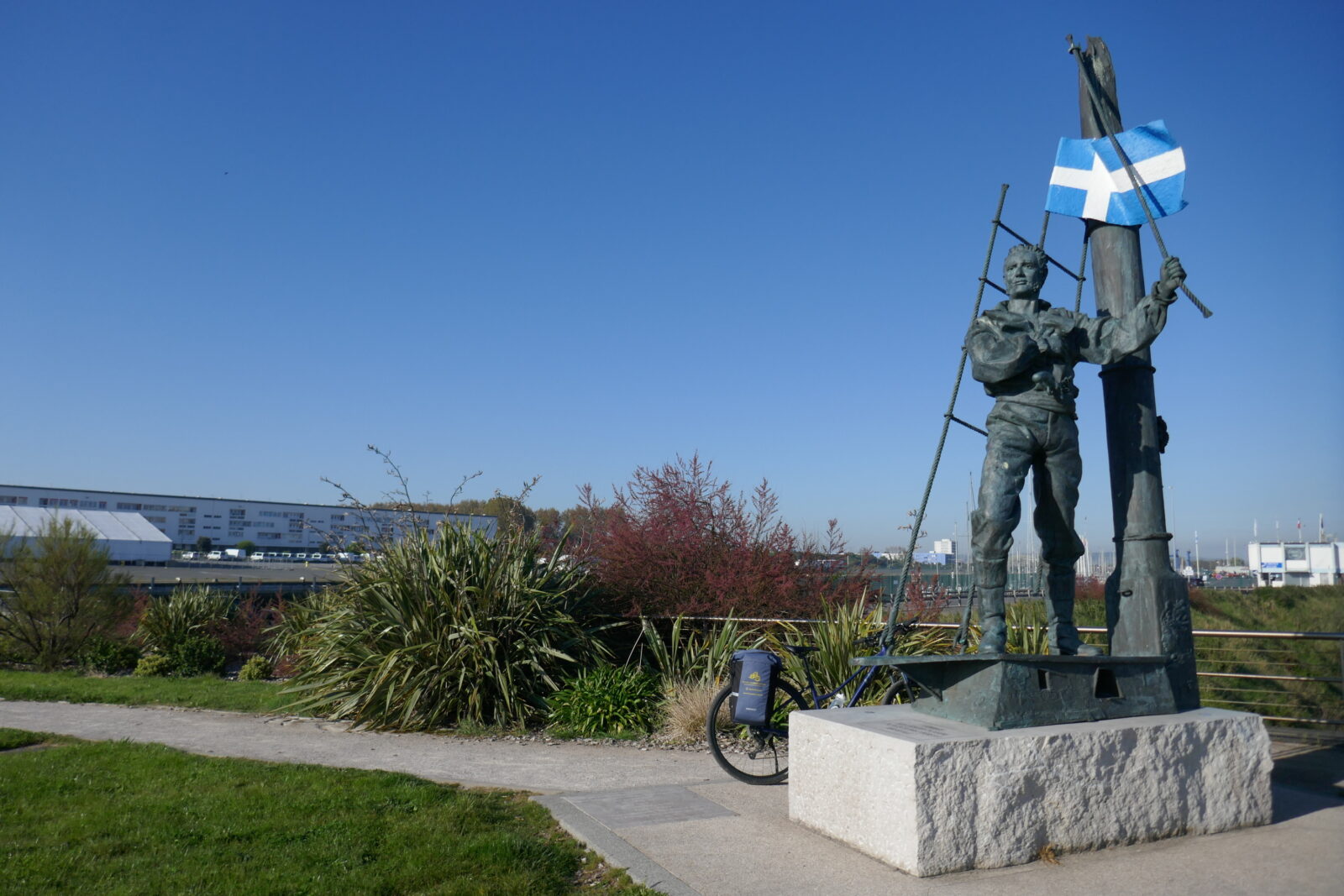

La Velomaritime, along coast
I woke up to a brilliant blue sky the next day. My destination for the night was a town called Boulogne-sur-Mer, a journey of around 110km along the La Velomaritime route, which is part of the European cycle route, EuroVelo4 (EV4).
Feeling lazy, I cheat by hopping on a train to Calais, reducing the distance by half so I can enjoy the cycling and the coast on this rare sunny day.
One note about regional French trains. I love them. Tickets are cheap, and there are bike racks on every regional train service, sometimes in more than one carriage, carrying up to six bikes. This makes cycle touring in France exceptionally easy.
From Calais, it was one wiggly road that hugs the coast southwards although the official EV4 route dips in and out of the farmlands to avoid the busy parts of the main road. This day had a completely different atmosphere to the Flanders route of yesterday, for it was not flat. The coastline rises and falls like a seismic graph and punchy hills soon drained the energy out of my untrained legs.
There are beaches aplenty, and this stretch of the coast, called the Opal Coast, is famed for its natural beauty. With 120km of beaches, dunes, and cliffs, it was popular with artists who came here to paint its landscape. I rode with the wind in my hair and a song on my lips until a sharp climb made me ponder why I do this to myself!
Although it is beautiful, we must not forget that we have not left the warring past behind. This stretch of coast was on Nazi Germany’s Atlantic Wall line of defence, and bunkers can still be seen (and visited) all along the coast. Those interested will find war museums in almost every town, although I avoided those on my trip, both due to lack of time and to save my tears.
The Somme Valley route
By the third day, I have gone west and south, and now turn east to form my loop. I began the day on a train from Boulogne-sur-Mer inland to Abbeville to follow the Somme Valley route.
This is another region we associate with the wars, especially for our Australian Imperial Forces during World War I.
The valley is quiet, and the cycle route is almost entirely amongst nature, on compact gravel along the Somme River. In contrast to the previous days, the route was flat, easy and traffic-free, and well-shaded by trees.
I could switch off my traffic alert system, look out only for squirrels and water rats, and enjoy the ride until I arrived at the final destination of Amiens.
The city’s cathedral, the largest in France, has memorial plaques for the Australians who fought here. And that’s not the only link. Australian artist Fintan Magee has painted some stunning street art in his bevelled glass style. If you love street art, you will love Amiens, as there is plenty of it.
With three varied routes and a network of others crisscrossing them in a region so friendly to cyclists, what’s not to love about cycling in northern France?
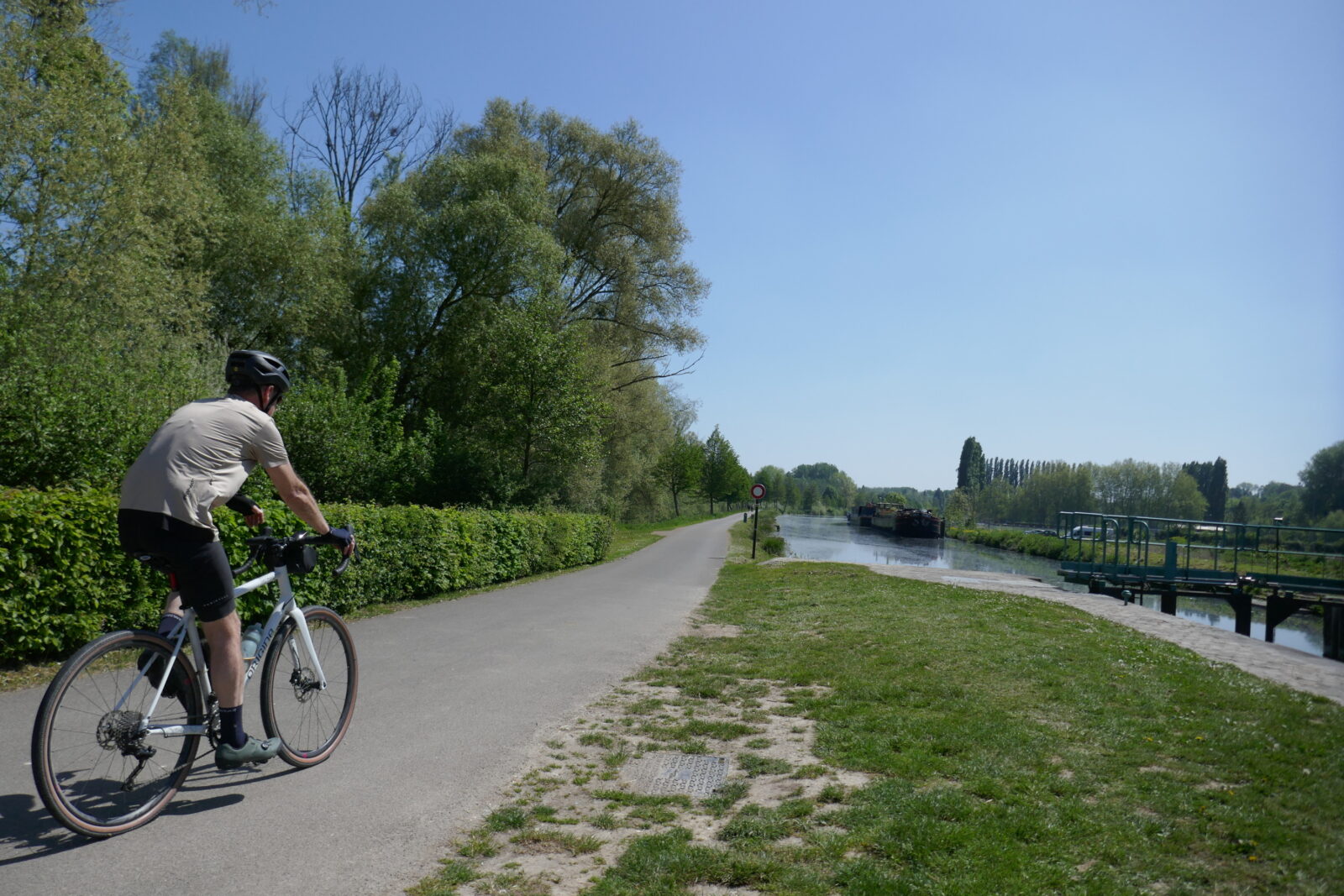
Further afield
From Amiens, the Tour will leave the north and head down to Normandy for the cities of Rouen and then begin a stage from Caen.
Rouen is right in the middle of the La Seine a Velo cycling route that links Paris and the sea, and you can easily explore either left or right of the route and have a great day out on the bike.
Caen is on the cycling route of La Vélo Francette, which leads you through the Loire Valley towards the Atlantic city of La Rochelle.
And of course, the Norman lands between Rouen and Caen is where France makes the best ciders, and a chance to cycle the ‘Cider Route’ to visit producers and do some cider tasting at the same time!
Tour Amy’s itinerary
Amy hired a bike from:
Ch’tis voyages à vélo is a bike rental delivery service offering guided tours. The friendly Fabien also has bike packs and helmets to rent. chtisvoyagesavelo.com
Amy stayed at the following cycling-friendly hotels:
In Lille: Mama Shelter https://mamashelter.com/lille/
In Dunkirk: Hotel Merveilleux https://hotelmerveilleux.com/
In Boulogne-sur-Mer: Hôtel La Matelote https://www.la-matelote.com/
In Amiens: Moxy Hotel, Amiens https://www.marriott.com/en-us/hotels/bvaox-moxy-amiens
Information on the routes:
Cycling in Lille: https://en.lilletourism.com/getting-organized/sustainable-travel/accueil-velo/
Veloroute des Flandres: https://www.ot-hautsdeflandre.fr/fr/voir-faire/balades-en-tous-genres/circuits-cyclo/la-veloroute-des-flandres-v364
La Velomaritime: https://www.lavelomaritime.com/
Somme Valley Cycle Route: https://www.somme-tourisme.com/en/discover/somme-valley-the-ideal-valley/the-somme-by-bike/the-somme-valley-cycle-route/

Amy McPherson
Amy McPherson - A London-based Aussie, Amy is a keen cyclist and runner. A highly-respected travel writer, she specialises in active travel in France and Italy.
